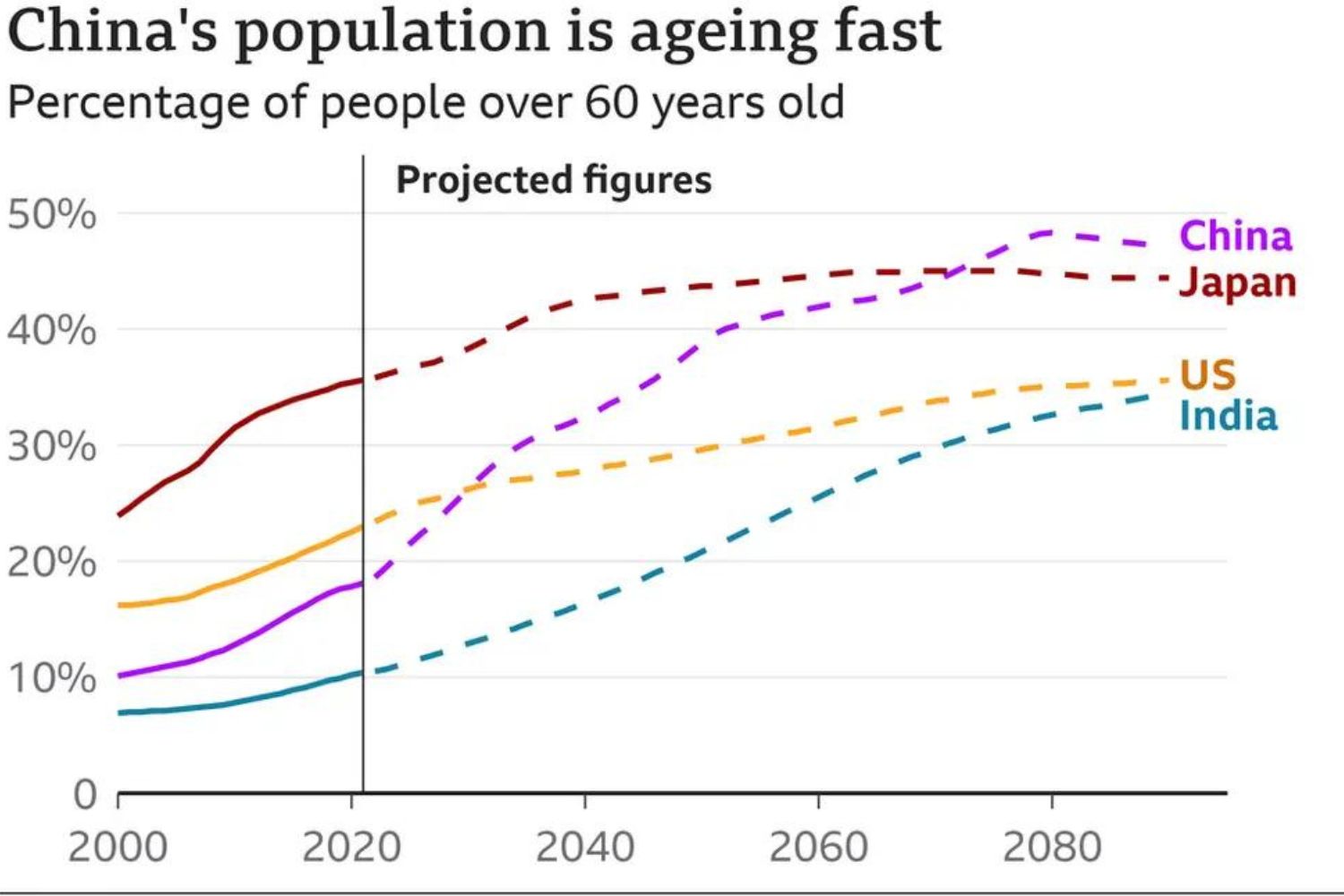In response to its rapidly aging population and the mounting financial strain on its pension system, China’s government has announced plans to gradually raise the statutory retirement age. The current retirement age in China is 60 for men and between 50 to 55 for women, significantly lower than in most developed countries. The proposed reforms, slated for implementation by 2029, aim to adopt a “voluntary and flexible” approach to the changes .
The announcement follows extensive discussions within the Communist Party addressing demographic challenges, including a declining birth rate and increasing life expectancy, which has risen to 78 years. By 2035, the population aged 60 and older is expected to exceed 400 million, intensifying the pressure on the pension system . The proposal has sparked considerable backlash amongst the public, particularly from younger workers who are already contending with a challenging job market.
Many are concerned that delaying retirement could exacerbate unemployment for younger generations as older workers remain in the workforce longer . The government’s cautious wording in the announcement indicates an awareness of the potential unpopularity of the reform, with reports of some online discussions being censored .
Overall, while the government underscores the necessity of reform to address demographic shifts, the social implications of raising the retirement age remain a contentious issue in China.
China is grappling with significant demographic challenges that are poised to impact its economy and business landscape profoundly. The country faces an aging population. This demographic shift results in a higher dependency ratio, where a smaller working-age population must support a growing number of retirees, straining social and economic resources. Concurrently, China is experiencing a declining birth rate, a lasting effect of the one-child policy implemented from 1979 to 2015, which has led to fewer young people entering the workforce.
These factors contribute to labor shortages across various sectors, challenging businesses to find adequate human resources and increasing labor costs. Additionally, the shrinking workforce may dampen consumer spending and reduce overall economic productivity, creating hurdles for businesses reliant on domestic consumption. As China navigates these demographic shifts, businesses will need to adapt by investing in automation, upskilling workers, and exploring new markets to sustain growth amid the evolving economic landscape.
The aging population also places considerable strain on China’s social services and healthcare systems. With more people retiring and living longer, the pension system faces immense pressure, potentially leading to higher taxes or reduced benefits. This situation could impact consumer behavior, as older individuals may save more and spend less due to uncertainty about their financial future.
Furthermore, healthcare costs are likely to surge as the demand for medical services and long-term care increases, creating additional financial burdens for both the government and individuals. Businesses in the healthcare and pharmaceutical sectors might see growth opportunities, but they will also face increased competition and regulatory challenges.
Moreover, the demographic shift could lead to significant changes in the labor market. With fewer young workers, companies may struggle to fill positions, particularly in labor-intensive industries like manufacturing and construction. This labor shortage could drive wages up, impacting profit margins and potentially leading to higher prices for consumers.
To counter these challenges, businesses may turn to automation and artificial intelligence to maintain productivity levels, driving demand for technology and innovation. However, this transition will require substantial investment and could lead to a temporary increase in unemployment as workers are displaced by machines.
The demographic challenges also have broader economic implications. A shrinking workforce and higher dependency ratio could slow economic growth, reducing China’s competitiveness on the global stage. To mitigate these effects, China might pursue policies to attract foreign talent and encourage higher fertility rates, though such measures would take time to produce results. In the meantime, businesses might look to expand their operations overseas to diversify their markets and reduce reliance on the domestic economy.
This strategy could open new revenue streams but also expose companies to geopolitical risks and the complexities of operating in foreign markets. China’s demographic challenges are multifaceted and far-reaching, impacting everything from labor markets and economic growth to social services and consumer behavior. Businesses operating in China will need to be agile and forward-thinking, investing in technology, exploring new markets, and adapting to the changing demographic landscape to remain competitive and sustainable in the long term.
ALSO READ: Deaths in China to reach ‘an unprecedented scale’, peak at 19 million in 2061














bBkwIDxnh